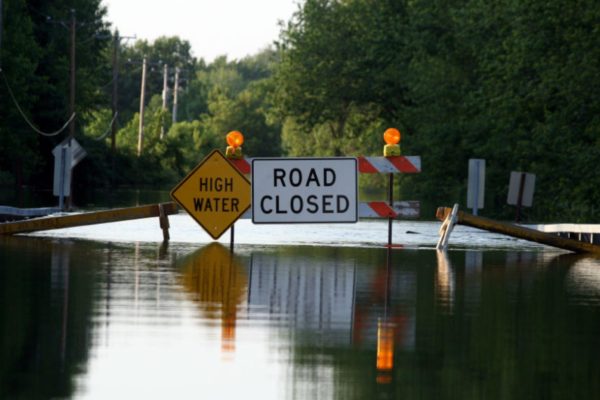Over the course of a few days and several feet of rain thanks to Hurricane Harvey, we learned a lot about how our energy situation has changed in Texas.
Because of the Shale Revolution, we’ve shifted from being the world’s largest importer of crude oil and refined products, such as gasoline, to being the world’s largest exporter of it. And recently we even started exporting crude oil after a four-decade pause and flipped from being an importer of liquefied natural gas to being an exporter of it.
That means impacts have also shifted.
When we were the world’s largest importer, global risk became a local problem. Our prices would spike here because of a storm or civil unrest elsewhere. But today it’s the other way around: Flooding in Texas affects energy supplies elsewhere. It’s a testament to the speed of our Texas-led domestic rebound in oil and gas production that the stakes would change so dramatically during the span of a decade.
Energy companies are also planning the large-scale investment of billions of dollars for more industrial facilities — such as chemical plants, refineries and export terminals — along the Gulf Coast. But fresh off of Hurricane Harvey’s lashing, is it smart to concentrate more critical infrastructure in harm’s way?
It’s worth remembering that hurricanes are nothing new for the Gulf Coast. During the past 12 years, Hurricanes Katrina, Rita, Ike and Gustav all hit the oil and gas industry in the Gulf of Mexico, Texas and Louisiana. Oil and gas production showed notable dips during the weeks the hurricanes struck, reflecting the number of wells that were shut in and platforms or subsea pipelines that were damaged from winds and landslides.
But this time was different. Instead of winds, Hurricane Harvey’s main weapon was rain and flooding. That means the power sector, whose wires and poles have trouble withstanding high winds, mostly survived the onslaught, with only hundreds of thousands (instead of millions) of people without power.
But the standing water created new threats to our refineries. About 4.4 million barrels per day of refining, more than 25 percent of national capacity, was temporarily taken off line and still hasn’t fully recovered. As damaging as that is, we should expect refineries to be fully operational within weeks, not months or years.
And although prices may be higher for a while, because crude oil prices haven’t surged, we can expect gasoline prices to return to where they were once the immediate effects of the hurricanes subside.
Because refineries were turned off, the demand for crude oil temporarily dropped. That created an unusual situation that oil prices stayed level — or even dropped — despite Harvey. But, prices for refined products such as gasoline, diesel and jet fuel increased because of tighter supplies as a consequence of shuttered facilities.
Once the word about scarcity got out, human behavior — namely hoarding — kicked in, exacerbating things such that scores of gasoline stations that had no fuel to sell. So once again, Texas, the energy capital of the world, had pockets of people without energy.
Given all that we know about the propensity for hurricanes and climate models that imply those hurricanes will be more powerful, how do we move forward? Should the energy industry reconsider ramping up investment in Texas?
No. They should stay.
Companies are choosing the Texas coast for the same reasons they always have: access to cheap resources, a large labor pool with relevant expertise, cultural acceptance of the industry, and ports that facilitate export to the world. Besides, other coastal locations also face threats.
But it would be silly to think that the threat of future Harvey-like events is going away. That means our Texas industry will need to spend more money on hardening its facilities. Protecting just against wind and rain isn’t enough; they will also have to protect against massive flooding.
Municipalities and regional planners must look more seriously at the floodplains and reconsider how development will be allowed to unfold in the future. Ramping up on impervious cover makes the floods worse for everyone, which means we all have a stake in making sure the local flood plains can work like fully functioning ecosystems that absorb excess water.
We also need to invest in better information-sharing systems statewide. Rumors of a gasoline shortage became a self-fulfilling prophecy as nervous commuters went on a panic-buying spree to top off half-full tanks or to fill extra tanks as if preparing for an apocalypse, causing stations to run out of fuel.
Regulators did a good job of communicating, but it would be beneficial to create real-time information systems that visually display how much fuel is available statewide and at individual cities or stations to help assuage those fears, avoiding similar stampede mentality.
In the end, the Texas energy industry is the heartbeat of the nation’s economy, so we all have a collective need to plan for a harsher future. It’s not just our homes, but our businesses and the nation’s energy system that are at stake.
Michael E. Webber is deputy director of the Energy Institute, co-director of the Clean Energy Incubator and a professor of mechanical engineering at The University of Texas at Austin. His book “Thirst for Power: Energy, Water and Human Survival” was published by Yale University Press in 2016.
A version of this op-ed appeared in the Dallas Morning News.
To view more op-eds from Texas Perspectives, click here.
Like us on Facebook.




